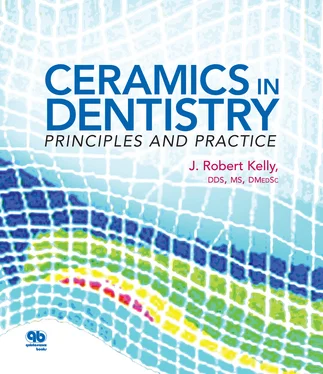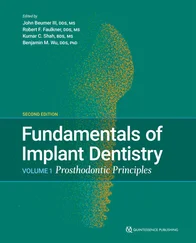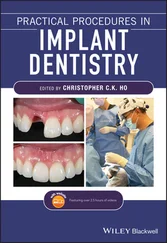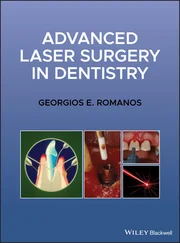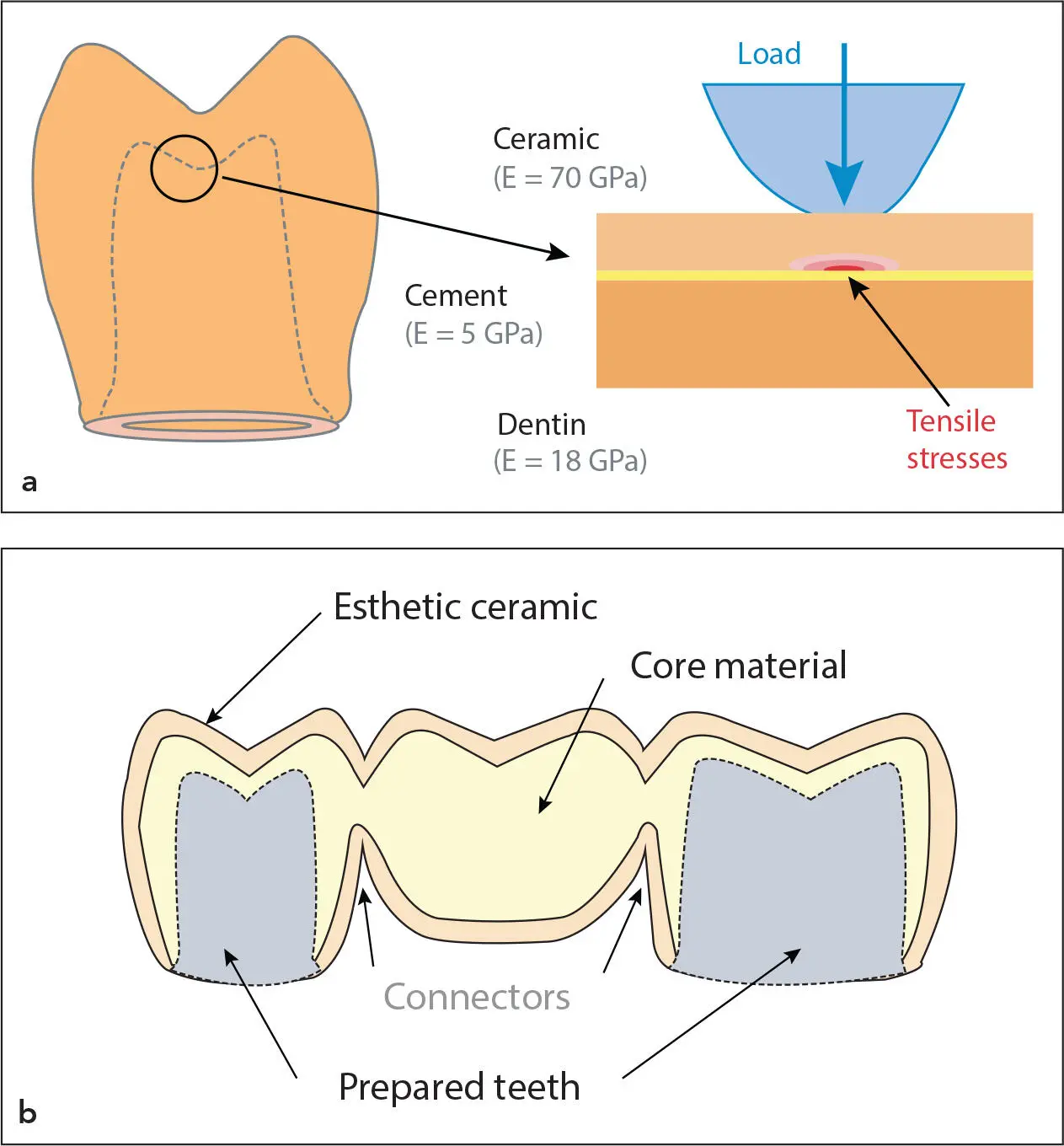
Fig 2-6 (a) Finite element analysis of blunt loading on the wear facet of an all-ceramic crown. High tensile stresses develop on the cementation surface due to slight bending of the stiffer ceramic on the less stiff substructure like dentin. These stresses cause radial cracks in the cementation surface that propagate to the occlusal surface. For any given load, these stresses increase with the difference in stiffness, or elastic modulus, between the ceramic and the substructure. This has direct clinical implications (see chapter 4.) (b) All-ceramic multiple-unit FDPs often fail at their connectors. It is not the connector surface area that is important but rather the square of the connector height, width of the connector, radii of the curvature, and mobility of the abutment teeth.
Fracture Toughness
Fracture toughness is essentially a measure of how difficult it is to propagate a crack though the ceramic; it describes the ability of a material containing a crack to resist fracture. Fracture toughness is one of the most important properties of any material for design applications. While measured strengths are very sensitive to flaw size, fracture toughness is not; therefore, fracture toughness is a more inherent property of ceramics and can be used to compare ceramics more directly than can strength measures. Fracture toughness measures the critical stress intensity at the crack tip for a crack to propagate by mode 1 opening (simple opening like the jaws of a crocodile). Stress intensity is designated by the letter K, with a subscript 1 for mode 1 and C for critical: K 1C. Fracture toughness for dental ceramics ranges from 0.8 to 1.0 for esthetic porcelains, to approximately 3.5 for lithium disilicate, 4.0 for alumina, and 5.0 to 8.0 for zirconia. The units for fracture toughness are a bit crazy: MPa·m ½. Values for metals begin at about 20 and can reach 100. Unlike strength, fracture toughness has been observed to generally correlate with clinical indications, leading the Technical Committee 106 (Dentistry) of the International Standards Organization to recommend fracture toughness values in a new classification scheme based on clinical indications from numerous clinical trials. Portions of this classification from ISO 6872:2008 are presented in the Table 2-1.
| Table 2-1 |
Recommended fracture toughness values for ceramics based on clinical indication* |
| Class |
Clinical indication |
Commercial examples |
Minimum fracture toughness (MPa·m ½) |
| 1 |
a. Monolithic ceramic for single-unit anterior prostheses, veneers, inlays, or onlays (adhesively cemented) b. Ceramic for coverage of a metal framework or a ceramic substructure |
Many, including Vita CEREC blocks |
0.7 |
| 2 |
a. Monolithic ceramic for single-unit anterior or posterior prostheses (adhesively cemented) b. Fully covered substructure ceramic for single-unit anterior or posterior prostheses (adhesively cemented) |
Leucite-reinforced In-Ceram Alumina |
1.0 |
| 3 |
a. Monolithic ceramic for single-unit anterior or posterior prostheses and for three-unit prostheses not involving molar restoration (adhesively or nonadhesively cemented) b. Fully covered substructure for single-unit anterior or posterior prostheses and for three-unit prostheses not involving molar restoration (adhesively or nonadhesively cemented) |
Lithium disilicate In-Ceram Alumina Leucite-reinforced |
2.0 |
| 4 |
a. Monolithic ceramic for three-unit prostheses involving molar restoration b. Fully covered substructure for three-unit prostheses involving molar restoration |
Lithium disilicate Zirconia |
3.5 |
| 5 |
Monolithic ceramic for prostheses involving four or more units or fully covered substructure for prostheses involving four or more units |
Zirconia |
5.0 |
*This table is derived from the classification system and recommended methods for measuring fracture toughness in Annex A of ISO 6872:2008.
Transformation-Toughened Zirconia
Transformation-toughened zirconia is potentially the most interesting polycrystalline ceramic now available for dentistry because its fracture toughness (and hence strength) involves an additional mechanism not found in other polycrystalline ceramics. Unlike alumina, zirconia is transformed from one crystalline state to another during firing. At firing temperature, zirconia is tetragonal, but at room temperature it is monoclinic, with a unit cell of monoclinic occupying about 4.4% more volume than when tetragonal.Unchecked, this transformation leads to crumbling of the material on cooling. In the late 1980s, ceramic engineers learned to stabilize the tetragonal form at room temperature by adding small amounts (approximately 3 mass% to 8 mass%) of calcium and later yttrium or cerium. However, the tetragonal form is really only “metastable,” meaning that trapped energy still exists within the material to drive it back to the monoclinic state. The highly localized stress ahead of a propagating crack is sufficient to trigger grains of the ceramic to transform in the vicinity of the crack tip. In this case, the 4.4% volume increase becomes beneficial, essentially altering material conditions around the crack tip and shielding it from the outside world. In scientific terms, transformation incrementally increases the local fracture toughness as the transformation zone develops around the growing crack.
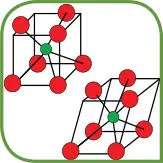
Monoclinic-tetragonal-monoclinic transformation of zirconia.

Crack growth in alumina and zirconia.
Zirconia substructure issues
With a fracture toughness higher than that of alumina ceramics, transformation-toughened zirconia represents an exciting potential substructure material. However, possible problems with zirconia ceramics may involve long-term instability in the presence of water, porcelain compatibility issues (thermal issues during firing and cooling), and some limitations in case selection due to their opacity. Two major concerns with zirconia are porcelain chipping and low-temperature degradation. There are early reports of significant percentages (ie, 25% to 50%) of single-unit and multi-unit prostheses having porcelain chipping and cracking. And the propensity for partially stabilized zirconia to autocatalytically transform at surface grain boundaries due to an interaction with water may create major structural issues in the long run.
Porcelain chipping
Конец ознакомительного фрагмента.
Текст предоставлен ООО «ЛитРес».
Прочитайте эту книгу целиком, купив полную легальную версию на ЛитРес.
Безопасно оплатить книгу можно банковской картой Visa, MasterCard, Maestro, со счета мобильного телефона, с платежного терминала, в салоне МТС или Связной, через PayPal, WebMoney, Яндекс.Деньги, QIWI Кошелек, бонусными картами или другим удобным Вам способом.
